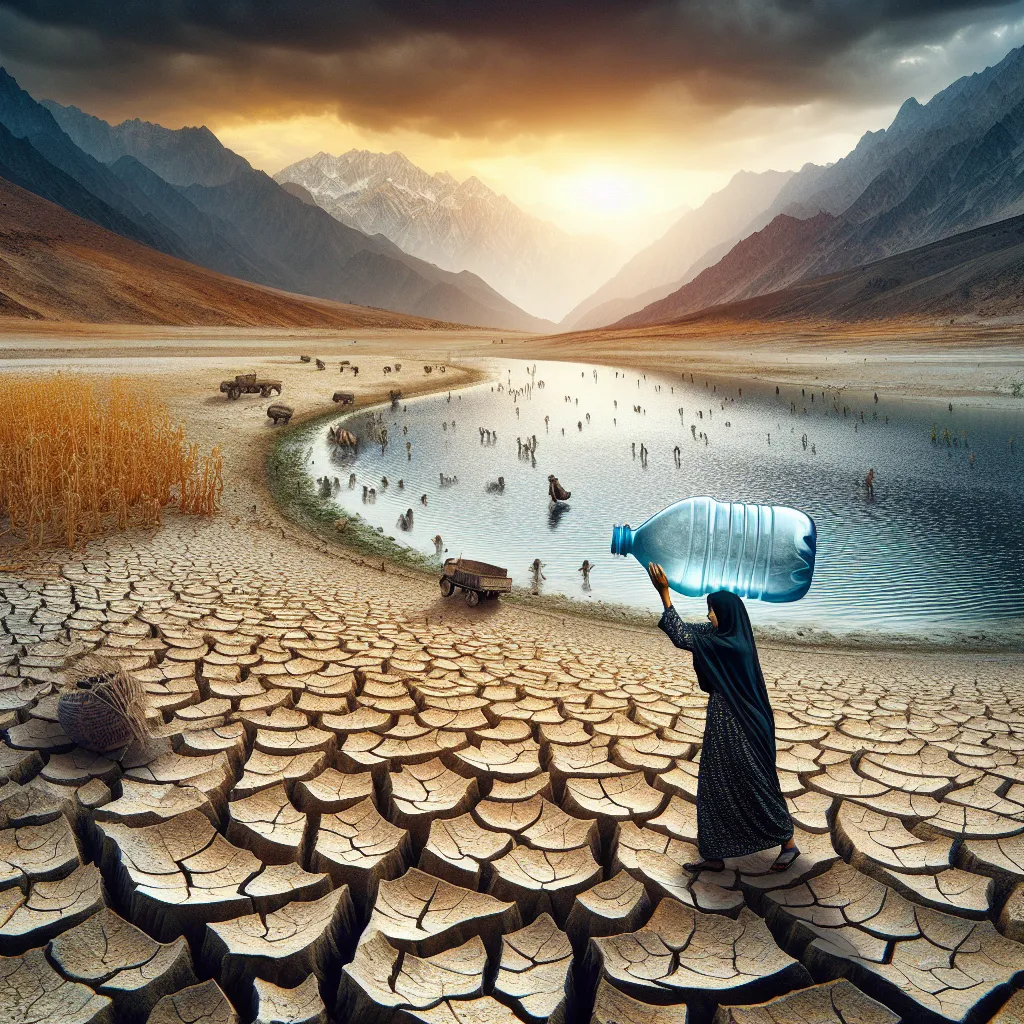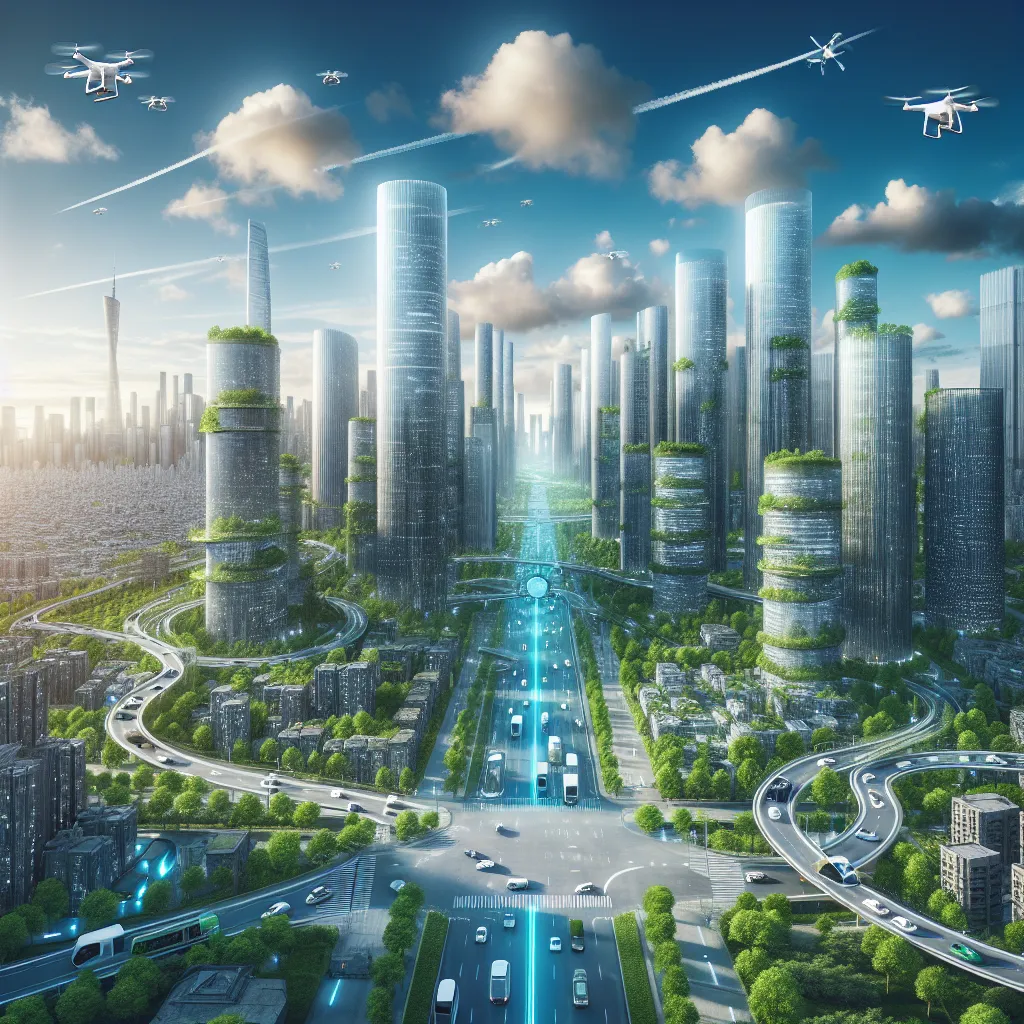Welcome to our IELTS Reading practice test focusing on the critical topic of climate change and its effects on freshwater resources. This comprehensive test will help you prepare for the IELTS Reading section while expanding your knowledge on an important global issue.
Nội dung bài viết
 Climate change impacts on water scarcity
Climate change impacts on water scarcity
Introduction
Climate change is one of the most pressing issues of our time, affecting various aspects of our environment and daily lives. One of the most significant impacts is on freshwater availability, a crucial resource for human survival and ecosystem health. This IELTS Reading practice test will explore the complex relationship between climate change and freshwater resources, helping you improve your reading skills while gaining valuable insights into this global challenge.
IELTS Reading Test: Impact of Climate Change on Freshwater Availability
Passage 1 – Easy Text
Climate change is having a profound impact on the world’s freshwater resources. As global temperatures rise, the water cycle is being altered, leading to changes in precipitation patterns, increased evaporation, and more frequent extreme weather events. These changes are affecting the availability and quality of freshwater in many regions around the globe.
One of the most visible effects of climate change on freshwater is the melting of glaciers and snow packs. These frozen water reserves act as natural reservoirs, slowly releasing water throughout the year. However, as temperatures rise, these ice stores are melting at an accelerated rate, initially increasing river flows but ultimately leading to reduced water availability in the long term.
Another significant impact is the change in precipitation patterns. While some areas are experiencing increased rainfall, others are facing more frequent and severe droughts. This uneven distribution of rainfall is causing water scarcity in some regions and flooding in others, making water management increasingly challenging.
Climate change is also affecting water quality. Higher water temperatures and changes in the timing and intensity of precipitation can lead to increased pollution and sedimentation in water bodies. This not only affects the ecosystems that depend on these water sources but also increases the cost and difficulty of treating water for human consumption.
The impact of climate change on freshwater availability is not just an environmental issue; it has far-reaching social and economic consequences. Water scarcity can lead to conflicts over water resources, affect food production, and hinder economic development. It also poses significant challenges to public health, as access to clean water is essential for sanitation and disease prevention.
Addressing the impact of climate change on freshwater resources requires a multi-faceted approach. This includes implementing water conservation measures, improving water infrastructure, and developing more efficient irrigation techniques. Additionally, there is a growing need for better water governance and international cooperation to manage shared water resources effectively.
Ultimately, mitigating the effects of climate change on freshwater availability will require global efforts to reduce greenhouse gas emissions and limit further temperature increases. By taking action now, we can help ensure the availability of this vital resource for future generations.
Questions 1-7
Do the following statements agree with the information given in the passage? Write
TRUE if the statement agrees with the information
FALSE if the statement contradicts the information
NOT GIVEN if there is no information on this
- Climate change is causing uniform changes in precipitation patterns globally.
- Melting glaciers initially increase river flows but lead to long-term water scarcity.
- All regions are experiencing increased rainfall due to climate change.
- Higher water temperatures can lead to increased water pollution.
- Water scarcity has no impact on economic development.
- Improving water infrastructure is one approach to address climate change impacts on freshwater.
- Reducing greenhouse gas emissions is unnecessary for protecting freshwater resources.
Questions 8-13
Complete the sentences below. Choose NO MORE THAN TWO WORDS from the passage for each answer.
- Glaciers and snow packs act as natural ___ for freshwater.
- Climate change is causing an of rainfall across different regions.
- Changes in precipitation timing and intensity can increase ___ in water bodies.
- Water scarcity can lead to ___ over water resources between different groups or regions.
- Access to clean water is crucial for ___ and disease prevention.
- Effective management of shared water resources requires better water ___ and international cooperation.
Passage 2 – Medium Text
The intricate relationship between climate change and freshwater availability is becoming increasingly apparent as global temperatures continue to rise. This complex interplay affects not only the quantity of available freshwater but also its quality and distribution, posing significant challenges for water resource management and human societies worldwide.
One of the most profound impacts of climate change on freshwater systems is the alteration of the hydrological cycle. As the atmosphere warms, its capacity to hold moisture increases, leading to changes in precipitation patterns. This phenomenon, known as the Clausius-Clapeyron relation, suggests that for every 1°C increase in temperature, the atmosphere can hold approximately 7% more moisture. Consequently, some regions are experiencing more intense rainfall events, while others are facing prolonged droughts.
The cryosphere – the frozen parts of the Earth’s surface – plays a crucial role in freshwater availability. Glaciers, ice caps, and seasonal snow cover act as natural water towers, storing water in winter and releasing it during warmer months. However, rising temperatures are causing these ice reservoirs to melt at unprecedented rates. The initial increase in meltwater can lead to short-term abundance in some areas, but the long-term consequences are dire. As these frozen water sources diminish, many regions that depend on meltwater for agriculture, hydropower, and domestic use face an uncertain future.
Climate change is also exacerbating water quality issues. Warmer water temperatures promote the growth of harmful algal blooms and increase the metabolism of aquatic organisms, leading to reduced dissolved oxygen levels. Moreover, extreme weather events can cause increased erosion and sedimentation, affecting water clarity and transporting pollutants into water bodies. In coastal areas, sea-level rise is causing saltwater intrusion into freshwater aquifers, contaminating vital groundwater resources.
The impact on groundwater systems is particularly concerning. Changes in precipitation patterns and increased evaporation rates affect groundwater recharge. In many arid and semi-arid regions, where groundwater is often the primary water source, over-extraction combined with reduced recharge is leading to rapidly declining water tables. This not only threatens water security but also can cause land subsidence and damage to infrastructure.
Freshwater ecosystems are among the most vulnerable to climate change. Shifting thermal regimes in rivers and lakes are altering habitat suitability for many aquatic species, leading to changes in biodiversity and ecosystem functions. Wetlands, which play a crucial role in water purification and flood control, are particularly at risk from changing hydrological conditions and sea-level rise.
The socio-economic implications of these changes are profound. Water scarcity can trigger or exacerbate conflicts, particularly in transboundary river basins. It also poses significant challenges to food security, as agriculture accounts for about 70% of global freshwater withdrawals. Urban areas, especially in developing countries, face increasing difficulties in meeting the water demands of growing populations under changing climatic conditions.
Adapting to these challenges requires a multi-faceted approach. Integrated water resources management (IWRM) is becoming increasingly important, emphasizing the need for coordinated development and management of water, land, and related resources. This includes improving water use efficiency, developing drought-resistant crops, and implementing water-sensitive urban design.
Technological solutions, such as advanced water treatment methods, precision agriculture, and improved weather forecasting, can play a crucial role in managing water resources more effectively. However, these must be complemented by policy measures and behavioral changes to reduce water consumption and promote conservation.
In conclusion, the impact of climate change on freshwater availability is a complex and pressing global issue. It requires immediate attention and concerted action at local, national, and international levels to ensure sustainable water management and security for future generations.
Questions 14-20
Choose the correct letter, A, B, C, or D.
-
According to the Clausius-Clapeyron relation, a 1°C increase in temperature results in:
A) 7% less moisture in the atmosphere
B) 7% more moisture in the atmosphere
C) No change in atmospheric moisture
D) A decrease in precipitation globally -
The cryosphere’s role in freshwater availability is described as:
A) Insignificant in the long term
B) Causing immediate water scarcity
C) Acting as natural water storage
D) Increasing water availability indefinitely -
Warmer water temperatures lead to:
A) Improved water quality
B) Increased dissolved oxygen levels
C) Reduced algal growth
D) Promotion of harmful algal blooms -
In coastal areas, sea-level rise is causing:
A) Increased freshwater availability
B) Saltwater intrusion into aquifers
C) Improved groundwater quality
D) Reduced need for water treatment -
The impact of climate change on groundwater systems includes:
A) Increased groundwater recharge
B) Improved water security
C) Rising water tables
D) Potential land subsidence -
Freshwater ecosystems are affected by climate change through:
A) Increased biodiversity
B) Stable thermal regimes
C) Altered habitat suitability
D) Enhanced ecosystem functions -
Integrated Water Resources Management (IWRM) emphasizes:
A) Focus solely on water resources
B) Ignoring land management
C) Coordinated management of water, land, and related resources
D) Prioritizing industrial water use
Questions 21-26
Complete the summary below. Choose NO MORE THAN TWO WORDS from the passage for each answer.
Climate change is significantly impacting freshwater availability worldwide. The warming atmosphere leads to changes in the (21) , affecting precipitation patterns. The melting of the (22) threatens long-term water security in many regions. Water quality is also affected, with (23) ___ promoting harmful algal growth.
Groundwater systems are at risk due to changes in recharge rates and (24) . Freshwater ecosystems face challenges from (25) , which alter habitat suitability. To address these issues, (26) ___ is becoming crucial, emphasizing coordinated management of various resources.
Passage 3 – Hard Text
The nexus between climate change and freshwater availability represents one of the most complex and pressing environmental challenges of the 21st century. As anthropogenic greenhouse gas emissions continue to alter the Earth’s climate system, the repercussions on the global hydrological cycle are becoming increasingly apparent and profound. This intricate interplay not only affects the quantity and quality of available freshwater but also has far-reaching implications for ecosystems, human societies, and geopolitical stability.
The fundamental mechanism through which climate change impacts freshwater resources is the intensification of the hydrological cycle. As global temperatures rise, the atmosphere’s water-holding capacity increases exponentially, adhering to the Clausius-Clapeyron relation. This thermodynamic principle dictates that for each degree Celsius of warming, the atmosphere can retain approximately 7% more water vapor. Consequently, this amplification leads to more frequent and intense precipitation events in some regions, while paradoxically exacerbating drought conditions in others.
The cryosphere, encompassing the Earth’s frozen water reservoirs, plays a pivotal role in freshwater availability and is particularly vulnerable to climate change. Glaciers, ice sheets, and seasonal snowpack act as natural “water towers,” storing water during colder periods and releasing it gradually during warmer months. However, the accelerated melting of these ice masses due to rising temperatures is altering this delicate balance. While initial increases in glacial meltwater may temporarily boost river flows, the long-term prognosis is dire. As these frozen reservoirs diminish, many regions that rely on meltwater for agriculture, hydropower generation, and municipal water supplies face an uncertain hydrological future.
Climate change also exerts a significant influence on groundwater resources, albeit in more subtle and complex ways. Alterations in precipitation patterns and increased evapotranspiration rates directly affect groundwater recharge. In arid and semi-arid regions, where groundwater often serves as the primary water source, climate change-induced shifts in recharge patterns, coupled with over-extraction, are leading to rapid depletion of aquifers. This not only threatens water security but also can result in land subsidence, saltwater intrusion in coastal aquifers, and the mobilization of geogenic contaminants such as arsenic.
The quality of freshwater resources is equally at risk from climate change impacts. Elevated water temperatures promote the proliferation of harmful algal blooms and increase the metabolic rates of aquatic organisms, leading to reduced dissolved oxygen levels – a phenomenon known as aquatic hypoxia. Moreover, extreme precipitation events can exacerbate erosion and sedimentation, affecting water clarity and facilitating the transport of pollutants into water bodies. In coastal regions, sea-level rise induces saltwater intrusion into freshwater aquifers, compromising vital groundwater resources and threatening coastal ecosystems.
Freshwater ecosystems, among the most biodiverse and productive on Earth, are particularly vulnerable to climate change. Shifting thermal regimes in rivers and lakes are altering habitat suitability for numerous aquatic species, leading to phenological mismatches and disrupting food webs. Wetlands, which play crucial roles in water purification, flood mitigation, and carbon sequestration, are at risk from changing hydrological conditions and sea-level rise. The loss or degradation of these ecosystems not only impacts biodiversity but also diminishes the vital ecosystem services they provide to human societies.
The socio-economic ramifications of climate change-induced alterations in freshwater availability are profound and multifaceted. Water scarcity can act as a “threat multiplier,” exacerbating existing tensions and potentially catalyzing conflicts, particularly in transboundary river basins. The agricultural sector, which accounts for approximately 70% of global freshwater withdrawals, faces significant challenges in maintaining food security under changing climatic conditions. Urban areas, especially in developing countries, grapple with the dual pressures of meeting the water demands of burgeoning populations while adapting to climate change impacts on water resources.
Adapting to these complex challenges necessitates a paradigm shift in water resource management. Integrated Water Resources Management (IWRM) has emerged as a holistic approach, emphasizing the coordinated development and management of water, land, and related resources. This framework advocates for improved water use efficiency, the development of climate-resilient infrastructure, and the implementation of nature-based solutions such as watershed restoration and green urban design.
Technological innovations play a crucial role in addressing climate change impacts on freshwater resources. Advanced water treatment technologies, including membrane filtration and UV disinfection, offer promising solutions for improving water quality and enabling water reuse. Precision agriculture techniques, coupled with drought-resistant crop varieties, can significantly enhance water use efficiency in the agricultural sector. Moreover, improved climate modeling and hydrological forecasting capabilities are essential for informed decision-making and adaptive management strategies.
However, technological solutions alone are insufficient. Policy measures, institutional reforms, and behavioral changes are equally vital. Water pricing mechanisms that reflect the true value of water, incentives for water conservation, and regulations to protect water resources from pollution and over-extraction are essential components of a comprehensive approach to climate change adaptation in the water sector.
International cooperation and transboundary water management are becoming increasingly critical as climate change impacts transcend national borders. The United Nations Sustainable Development Goals, particularly SDG 6 (Clean Water and Sanitation) and SDG 13 (Climate Action), provide a framework for global action. However, translating these goals into effective policies and on-the-ground implementations remains a significant challenge.
In conclusion, the impact of climate change on freshwater availability represents a complex, multifaceted challenge that requires immediate and concerted action at local, national, and international levels. As we navigate the Anthropocene, our ability to manage and adapt to these changes will be crucial in ensuring water security, maintaining ecosystem health, and promoting sustainable development for future generations.
Questions 27-31
Choose the correct letter, A, B, C, or D.
-
According to the Clausius-Clapeyron relation, what happens to the atmosphere’s water-holding capacity as temperature increases?
A) It decreases by 7% per degree Celsius
B) It increases by 7% per degree Celsius
C) It remains constant regardless of temperature change
D) It fluctuates unpredictably with temperature change -
What is the long-term consequence of accelerated glacial melting?
A) Permanent increase in river flows
B) Improved water security in all regions
C) Uncertain future for regions relying on meltwater
D) Enhanced hydropower generation capabilities -
How does climate change affect groundwater resources in arid and semi-arid regions?
A) It increases groundwater recharge rates
B) It leads to rapid depletion of aquifers
C) It improves the quality of groundwater
D) It has no significant impact on groundwater -
What is aquatic hypoxia?
A) An increase in dissolved oxygen levels in water bodies
B) The proliferation of beneficial algae in freshwater ecosystems
C) A reduction in dissolved oxygen levels in water bodies
D) The natural purification process of freshwater systems -
Which of the following is NOT mentioned as a consequence of climate change on freshwater ecosystems?
A) Alterations in habitat suitability for aquatic species
B) Disru


